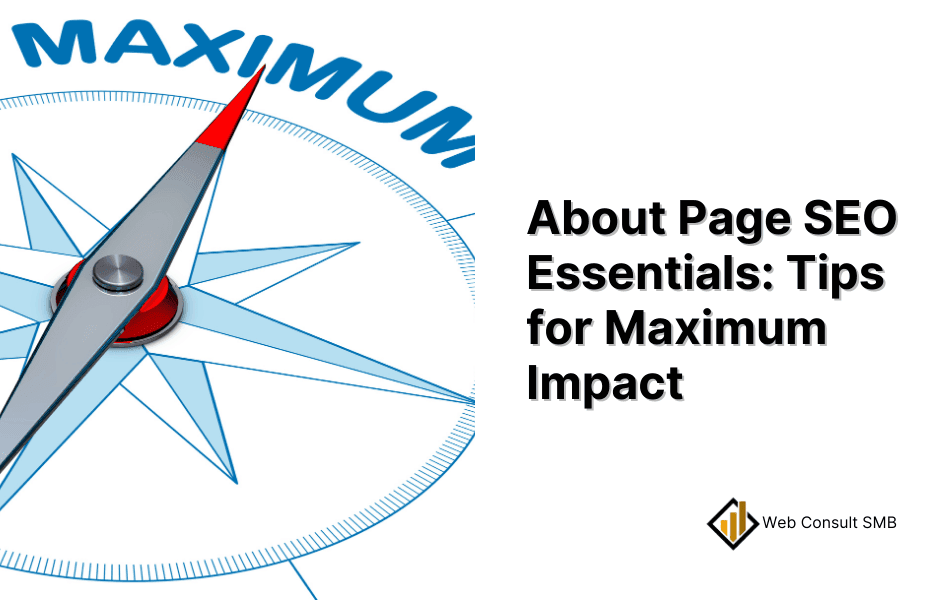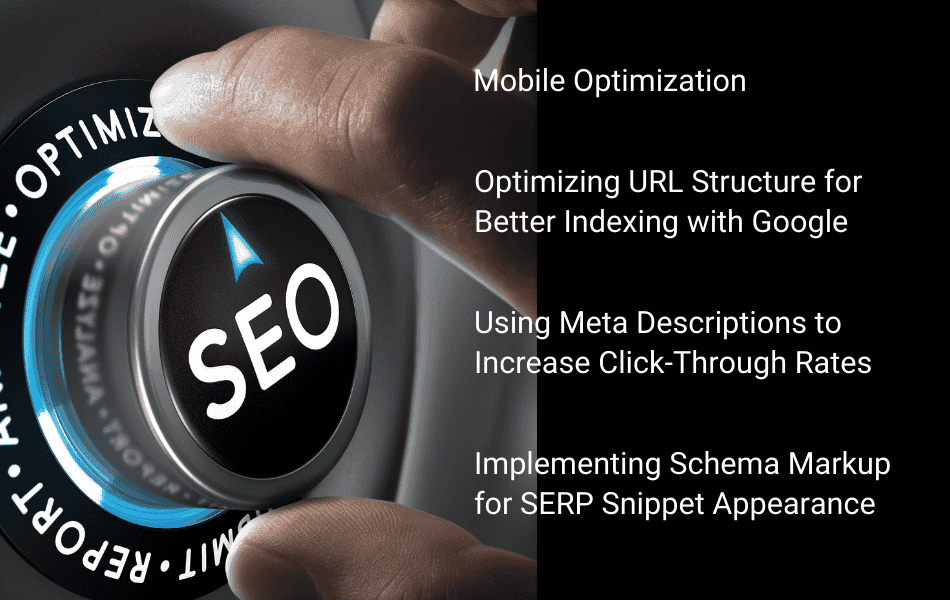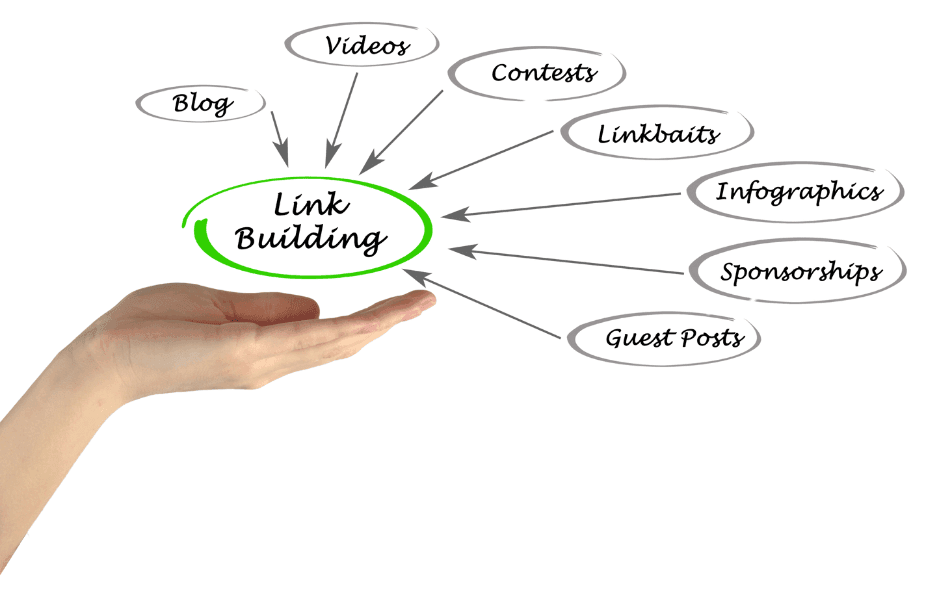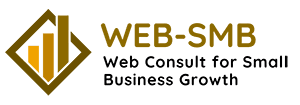About Page SEO Essentials: Tips for Maximum Impact


Table of Contents
Key Highlights
- An optimized About Page is a powerful tool to improve your website’s SEO, attracting organic traffic and increasing brand visibility.
- Engaging content, such as a compelling brand story and showcasing your team’s expertise, paired with strategic keyword integration, fosters user connection.
- Technical SEO tactics, including streamlined URLs, impactful meta descriptions, and schema markup, help achieve better search engine rankings.
- Elevating user experience involves blending keyword-rich text with natural language, featuring customer testimonials, and incorporating visual elements.
- Thoughtful internal and external linking strategies enhance your site’s authority and credibility, boosting your overall SEO performance.
Introduction
In digital marketing, first impressions are everything, especially in content marketing. Yet, many businesses overlook the potential of their About Page, often treating it as a secondary element.
In reality, this page is a powerful asset for search engine optimization (SEO) and enhancing user experience, including the effective use of a meta description tag to optimize search results.
It provides an opportunity to connect authentically with your target audience, build trust, and boost your search engine rankings.
Let’s explore how to optimize and maximize its SEO potential and overall impact.
Understanding About Page SEO
Your About Page often serves as a visitor’s first real impression of your business. It acts as a welcome message, introducing your brand, values, and mission while emphasizing transparency. However, if it’s poorly designed or unclear, it can confuse visitors and hurt your online visibility.
A. Why It Matters?
- Improves Online Visibility: It helps search engines understand your brand and increases your chances of ranking higher in search results.
- Enhances User Experience: By providing clear, helpful information, you create a better experience for visitors, keeping them engaged.
B. How to Optimize?
- Offer concise, valuable content that answers common questions.
- Align your content with what users are searching for to increase organic traffic.
The Role of an About Page in SEO Strategy
Your About Page is more than just an introduction—it’s a key player in your SEO strategy.
A. Search Engine Insights
Search engines analyze your About Page to determine how relevant your website is to specific queries. Being well-organized and informative increases your chances of appearing in search results, driving more traffic to the rest of your site.
B. Linking Opportunities
- Internal Links: Use it to direct visitors to other important pages, such as your services or blog.
- Anchor Text: Use descriptive and relevant text for links to help search engines understand the relationship between pages.
Making it optimized strengthens your overall SEO efforts and builds your site’s authority.
How an About Page Influences User Experience and Engagement
Imagine clicking on a search result expecting an engaging About Page, only to find something bland and uninspiring. This mismatch can lead to higher bounce rates and reduced trust.
A. Making It Memorable
- Showcase Your Personality: Share your brand’s story, values, and mission authentically. Let your audience see the human side of your business.
- Build Trust: Highlight what sets your business apart, whether it’s your unique expertise, customer-centric approach, or success stories.
B. Turn Readers Into Loyal Customers
In showcasing your brand’s strengths and values, you not only captivate visitors but also encourage them to explore other parts of your website. This engagement helps turn casual browsers into loyal customers who trust your brand.
Key Elements of a High-Impact About Page

Creating an effective About Page is essential. It needs to satisfy both search engines and real visitors. It’s not just about sprinkling keywords; it’s about weaving a story that resonates with readers and amplifies SEO.
A. Crafting a Compelling Brand Transparency and Story
Your brand story is the heart of your About Page. It’s more than just dates and facts—it’s about the “why” behind your business. Sharing your story is a great way to connect with your audience. Why did you start this journey? What problems do you care about solving? What values guide your company to ensure your brand is a good fit for your customers?
A compelling brand story connects emotionally with your audience. It humanizes your brand, making it relatable and memorable. Share personal anecdotes, challenges you’ve overcome, or humorous moments that reveal your company’s personality. A great story can leave a lasting impression, much like a well-crafted blog post.
B. Highlighting Team Expertise and Achievements
Your team is a core part of your brand’s identity. Highlight their skills, experience, and accomplishments to build credibility and trust.
- Include short bios of key team members, showcasing their expertise and passions.
- Highlight notable achievements like awards, press mentions, or significant milestones.
- Share case studies or testimonials to demonstrate real-world results and expertise.
By celebrating your team’s successes, you make your brand more trustworthy and relatable.
C. Integrating Target Keywords Naturally
Storytelling is vital, but so is SEO. Keywords are your bridge to search engines, helping them understand and rank your content.
- Research Keywords: Use tools like Semrush or Ahrefs to find relevant keywords your audience is searching for.
- Integrate Smoothly: Weave keywords naturally into your content to maintain readability and flow.
- Avoid Overstuffing: Excessive keyword use can harm your rankings. Prioritize quality and relevance over quantity.
Creating valuable, engaging content with naturally integrated keywords ensures your About Page supports both SEO goals and reader expectations.
D. Including Contact Information for Local SEO
Including accurate contact information on your About Page is crucial for local SEO success.
- Make Contact Details Prominent: Provide your business address, phone number, and email prominently to help search engines connect your website with local searches.
- Utilize Localized Keywords: Incorporate geographically relevant keywords in your contact details to improve visibility in local search results.
- Enhance User Experience: By ensuring easy access to your contact information, you improve the user experience and boost your chances of appearing in local search results.
Technical SEO

Great content is important, but technical SEO ensures your About Page performs effectively in Google search results and search engines, including the creation of optimized SEO pages. Small adjustments can make a significant impact on how easily users and search engines can find you.
A. Mobile Optimization
Ensure that your About Page performs optimally on mobile devices.
- Responsive Design: Adapt to all screen sizes for a smooth user experience.
- Fast Load Times: Optimize images and code for quicker loading.
- Tap-Friendly Navigation: Ensure buttons and links are easy to use on smaller screens.
By focusing on these elements, your About Page becomes both user-friendly and SEO-optimized.
B. Optimizing URL Structure for Better Indexing with Google
A simple, clear URL helps both users and search engines. It makes your page easier to find and understand.
- Use relevant keywords in your URL that describe the content of your page. For example:
www.techsolutions.com/aboutorwww.techsolutions.com/company. - Avoid generic terms like
about-us.htmlor confusing symbols and numbers. Clear URLs enhance usability and improve indexing.
C. Using Meta Descriptions to Increase Click-Through Rates
Think of your meta description as a mini pitch. It appears under your page title in search results, offering a snapshot of your content.
- Create a Unique Pitch: Highlight what makes your brand special, using target keywords and a strong call-to-action.
- Keep It Concise: Meta descriptions should be between 150 and 160 characters to avoid truncation.
- Tools for Optimization: Use tools like Semrush’s SEO Writing Assistant to ensure your meta descriptions are the right length and keyword-relevant.
D. Implementing Schema Markup for SERP Snippet Appearance
Schema markup is structured data that helps search engines understand your content. Adding Organization schema to your About Page can enhance its display in search results.
- What It Does: Organization schema provides details like your business name, logo, contact information, and social media links.
- Why It Matters: It can make your About Page stand out by showing rich details, such as your brand logo and contact info, directly in search results.
By implementing schema markup, you improve the visibility and professionalism of your About Page in search engine results(SERPs).
Here’s an example of how Organization schema can be implemented:
|
Schema Property |
Content |
|
@type |
Organization |
|
name |
Your Company Name |
|
url |
https://www.yourcompanywebsite.com/ |
|
logo |
https://www.yourcompanywebsite.com/logo.png |
|
description |
A brief, compelling description of your organization |
|
contactPoint.@type |
ContactPoint |
|
telephone |
+1-555-555-5555 |
|
|
info@yourcompany.com |
Content Strategies

Now that you know the key components of a great About Page, let’s dive into actionable strategies to make it even better. What you write matters, but how you present it matters just as much. When creating content focus on quality over quantity to avoid thin content issues that may negatively impact your SEO efforts.
A. Balancing Keyword Use Naturally
Using target keywords is essential for SEO, but it’s equally important to keep your writing natural and engaging. Overusing keywords—known as keyword stuffing—can harm your website’s credibility and user experience.
- Write for Readers First: Focus on creating content that is informative, engaging, and answers your audience’s questions fully.
- Integrate Keywords Naturally: Use keywords in a way that feels seamless and doesn’t interrupt the flow of your writing.
- Prioritize User Experience: Search engines reward content that resonates with readers. Aim to make it both helpful and enjoyable to read.
B. Including Customer Testimonials and Success Stories
Customer testimonials and success stories are powerful tools for building trust and credibility. Featuring these on your About Page, along with a clear CTA, gives potential customers a good idea of the real-world benefits of your products or services.
- Select Relevant Testimonials: Highlight reviews that showcase your strengths and address common pain points.
- Use Engaging Formats: Video testimonials can make a stronger emotional impact and feel more authentic.
- Be Genuine: Avoid overly promotional or generic testimonials. Focus on real experiences that align with your audience’s needs.
C. Adding Images and Videos for Engagement
Visual elements make your About Page more engaging and memorable. People are naturally drawn to images and videos, which can help keep visitors on your site longer.
- Use High-Quality Visuals: Include professional images of your team, workspace, or products to create a personal connection.
- Incorporate Videos: Showcase company culture, customer success stories, or explainer videos to make your page dynamic and interactive.
- Optimize for SEO: Add descriptive file names and alt text to your images to improve accessibility and help search engines understand your visuals.
By blending compelling content with strategic visual elements, that captures attention, builds trust, and supports your SEO goals.
Internal and External Linking

Strategic linking, both within your website and to external sources, is vital for enhancing the SEO of your About Page. You can regularly perform a site audit to identify any linking opportunities and related ideas.
Internal links guide visitors to other content on your site, while external links provide additional context and establish credibility.
A. Boosting Site Authority with Internal Links
Internal links connect different pages on your website. They serve two key purposes:
- Improving Navigation: Help users explore your website and discover related content.
- Strengthening Structure: Signal to search engines which pages are most important.
Include internal links in your About Page to direct visitors to key areas like your services, blog posts, or contact forms. Use clear, descriptive anchor text—the visible clickable text of a hyperlink. For example, instead of “click here,” use specific phrases like “learn more about our services” or “explore our latest blog posts.”
B. Enhancing Credibility with External Links
External links point from your website to trusted and quality sources outside your domain. They add credibility to your content and show search engines that you’re referencing reliable information.
- Relevance Matters: Link to authoritative sources related to your content. For example, if you mention sustainability, link to reputable environmental organizations or industry reports.
- Maintain User Experience: Ensure external links open in a new tab so users don’t leave your site entirely.
- Add Value: Use external links to enhance your content by providing additional insights or supporting evidence.
By thoughtfully integrating internal and external links, you can improve the usability, trustworthiness, and overall effectiveness of your About Page.
SEO Myths
The About Page is often misunderstood in the world of SEO, leading to myths that can undermine its potential.
Let’s debunk some common misconceptions and set the record straight.
1. The About Page Doesn’t Affect SEO
Many believe it is irrelevant for SEO, but it plays a crucial role as a central hub for information. Search engines index this page just like any other, using its content to understand your brand.
2. It’s Just About Keywords
While keywords are important, stuffing them can harm readability and credibility.
3. Visual Content Doesn’t Matter for SEO
Images and videos on your About Page do impact SEO. Optimizing visuals with descriptive file names, alt text, and appropriate sizing improves accessibility and load times, boosting search engine performance.
4. It is a “Set and Forget” Section
SEO thrives on relevance and updates. Neglecting this can result in outdated information, harming user trust and SEO rankings.
By understanding the true SEO value of your About Page, you can leverage it effectively to build trust, improve user experience, and enhance search engine visibility.
Conclusion
Creating a strong About Page is essential for building trust, engaging your audience, and improving your site’s SEO performance, especially when it comes to your webpage.
A well-crafted About Page is an integral piece of content that includes a compelling brand story, team highlights, and strategically integrated keywords to boost visibility.
Focus on technical elements like clear URLs, optimized meta descriptions, and schema markup to improve search engine rankings.
Enhance the user experience by adding customer testimonials and visual content, such as images and videos. Incorporate internal and external links and use headings to strengthen your site’s credibility and authority, as the parts of the URL contribute to creating a more SEO-friendly environment.
Keep your About Page updated, monitor its performance using analytics, and avoid common pitfalls like keyword stuffing or outdated content. Adding multimedia elements will make your page more engaging and encourage visitors to connect with your brand.
Remember, your About Page is more than just a section on your website—it’s a representation of your brand. Make it authentic, impactful, and memorable.
FAQs
How often should I update my About Page?
Updating your About Page regularly is a good SEO practice. While there’s no fixed schedule, consider refreshing it every few months. Add new achievements, team members, or relevant content. Google values updates, and these changes can help boost your rankings.
Can multimedia elements improve SEO?
Absolutely! Using images and videos enhances user experience and keeps visitors engaged, which sends positive signals to Google. Optimized multimedia content can improve your page’s rankings and make your About Page more dynamic and appealing.
What role does social proof play?
Social proof, such as testimonials, reviews, and awards, builds trust and credibility. It enhances user experience by showing that your brand is reliable and well-regarded. This not only fosters visitor confidence but also supports higher conversion rates and improved SEO.
How can I measure the success of my SEO strategy?
Use analytics tools to track key performance indicators:
- Page Visits: Monitor the number of visitors to your About Page.
- Time on Page: Measure how long users stay engaged.
- Bounce Rate: Keep track of how many visitors leave without interacting further.
- Conversions: Assess actions taken, such as sign-ups or contact form submissions.
Additionally, check your page’s rankings for targeted keywords to evaluate its visibility in search results.
Are there common pitfalls to avoid?
Yes, avoid these mistakes:
- Keyword Stuffing: Overloading content with keywords can hurt readability and SEO.
- Generic Content: Ensure your About Page stands out with unique, engaging details.
- Neglecting Visuals: Ignoring images and videos can make your page less engaging.
- Missing Calls-to-Action: Always guide visitors to take the next step, such as contacting you or exploring other pages.
How can you leverage analytics to continuously improve your About Page?
Use website analytics to refine your About Page over time. Analyze user behavior to identify strengths and weaknesses:
- Behavior Flow: Understand how users navigate your site.
- Exit Points: Pinpoint where users tend to leave the page.
- A/B Testing: Experiment with different layouts, content, or visuals to find what works best.
These insights can help you enhance SEO performance and user engagement, ensuring your About Page stays impactful and effective.
